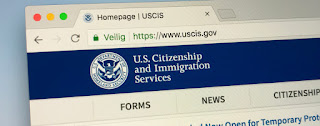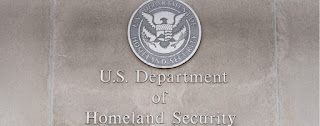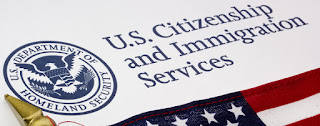Introduction
In this article, we will examine the oral arguments of Neal K. Kaytal before the Supreme Court on behalf of the respondents in Trump v. Hawaii. The case concerns challenges to the legality of the entry restrictions against nationals of seven countries set forth in President Donald Trump's September 24, 2017 Presidential Proclamation titled “Enhancing Vetting Capabilities and Processes for Detecting Attempted Entry Into the United States by Terrorists or Other Public-Safety Threats” [
PDF version].
You may see the full text of the oral arguments here: [
PDF version].
Before Reading
We recommend reading several other articles before reading this one in order to fully understand the issues. First, please see our article on the entry restrictions in President Trump's September 24 Proclamations [
see article]. Second, please see our introductory article to the oral arguments [
see article], and specifically the sections on “Issues Presented” and “Relevant Provisions” therein. Finally, please see our article on the oral arguments made in favor of the government's position in the case by Solicitor General Noel J. Francisco [
see article]. The Solicitor General's arguments were made prior to Kaytal's arguments and are referenced as such throughout this article. Furthermore, our companion article on the government's arguments includes the government rebuttal to several points made by Kaytal in support of the respondents.
Oral Argument of Neal K. Kaytal on Behalf of Respondents
Neal K. Kaytal presented arguments against the legality of the Proclamation on behalf of the respondents. He faced sharp questions from across the bench, but most notably from Chief Justice John Roberts and Justices Anthony Kennedy, Samuel Alito, and Neil Gorsuch.
Kaytal advanced several arguments against the entry restrictions. First, he contended that the Proclamation was in conflict with policy choices made by Congress to address the same problems. Second, he argued that the entry restrictions violated provisions of the INA prohibiting discrimination based on nationality. This second point was not addressed during the Solicitor General's argument before the court, although the Government rejected this claim in briefing by distinguishing the provision prohibiting discrimination based on nationality in the issuance of immigrant visas from the section 212(f) authority of the President to deny entry to any alien or any class of aliens. Third, Kaytal argued that the entry restrictions violated the Establishment Clause of the First Amendment. To this effect, Kaytal relied in large part on statements and tweets by President Trump during his presidency in arguing that the entry restrictions were tainted by anti-Muslim animus. However, Kaytal made clear that even if the Court rejected his Establishment Clause claims, the Proclamation should be struck down for being in conflict with the INA.
Scope of the President's Authority Under Section 212(f)
Chief Justice John Roberts asked Kaytal to address a hypothetical scenario wherein the President is informed by intelligence agencies that they “have 100 percent solid information that on a particular day 20 nationals from Syria are going to enter the United States with chemical and biological weapons.” He asked if, in this scenario, the President could ban the entry of nationals of Syria under section 212(f) for national security reasons. Kaytal stated explained that in evaluating this scenario, there are two considerations — the relevance of the nationality discrimination ban in section 202 of the INA and whether such restrictions would conflict with Congress' policy judgments. Kaytal accepted that such a ban on entry of Syrian nationals would be valid because it would be “an emergency fast-moving situation…”
Chief Justice Roberts then asked Kaytal to address the scenario if the information pointed to a threat in the future, for example, a week or a month from the date of the warning given. Kaytal cited to the Supreme Court decisions in Youngstown Sheet & Tube Co. v. Sawyer, 343 U.S. 579 (1952) [
PDF version] and Hamdan v. Rumsfeld, __ U.S. __ (2006) [
PDF version], in taking the position that the President is entitled to deference in declaring an emergency but that Congress is responsible for removing legislative impediments, if any such impediments exist. Regarding the actual Proclamation, Kaytal noted that President Trump had “never even introduced legislation about this” during the 460 days since the issuance of Executive Order 13769. Chief Justice Roberts then pressed the issue further, asking whether the President would have authority to implement an entry ban if Congress was unwilling or unable to act, including if such inaction was based on the President's reluctance to share “absolute intelligence broadly.” Kaytal acknowledged that the President will have residual authority in such a scenario to ensure national security. However, he distinguished the instant case by noting that Congress had considered the issues addressed in the Proclamation before its issuance, and that the only rationale specified by President Trump was that some countries were not cooperating with the United States. Regarding Congressional action, Kaytal noted that there are statutes that address the vetting of nationals of countries that are designated state sponsors of terrorism.
Justice Samuel Alito then spoke for the first time, noting that Congress had acted by enacting section 212(f) itself. He asked in light of that, why Kaytal believed that the Proclamation did not fall within the President's section 212(f) authority. Kaytal listed several points, stating that the Proclamation did not apply to a “class ” and that the proclamation did not have an end date. Justice Alito pressed Kaytal on his assertion that the Proclamation did not designate a class of aliens, suggesting that nationals of a certain country do in fact constitute a class. Kaytal responded that it is the respondents' position that there must be some limit on section 212(f), and that the limit necessarily is that its implementation cannot “countermand any of the provisions of the INA.” For example, Kaytal suggested that the President could not use section 212(f) to end aspects of the family preference system in the INA.
Justice Alito further questioned Kaytal on whether the Proclamation does anything like what he suggested, asking “[d]oes this proclamation purport to establish a new permanent immigration policy for the United States?” Kaytal stated that it did, arguing that it constituted a perpetual ban on immigration based on nationality, which he maintained was prohibited by section 202. Furthermore, he noted that Congress has declined to enact flat bans based on nationality in response to national security concerns.
Later in the oral arguments, Justice Kagan questioned Kaytal on his claim that 212(f) must be read as having limits and that these limits must include preventing the President from doing something “that's completely contrary to another section of the statute.” She asked him if it was this position that the President could not do anything under section 212(f) that was not contemplated by another section of the INA. Kaytal stated that this was not his view, but rather that his view was “that the President can supplement; he just can't supplant.” He proposed a three-part test on the issue:
- Can the 212(f) proclamation and the statute coexist?
- Has Congress prescribed a reticulated (networked) scheme?
- Is there any indication that Congress had considered the issue and addressed it in a different way?
Kaytal argued that the Proclamation failed all three points of this test and therefore exceeded the President's authority under section 212(f). In reiterating his points to this effect, he cited to the existence of the Visa Waiver Program, “which is all about countries that provide zero information to the United States, state sponsors of terrorism and the like…” Justice Alito asked whether Kaytal could envision any scenario where the President would find provisions in the INA to be inadequate and impose additional restrictions under 212(f). Kaytal responded that he could. Justice Kennedy then asked whether Kaytal was asking the Court to review the President's determination of a national security contingency, expressing concern that this was a duty reserved for the President, not the judiciary. Kaytal acknowledged that the President had wide authority in this area, especially in the event of an emergency, but that the judiciary has a role in evaluating if the President's actions contravene a statute.
Chief Justice Roberts expressed reservations with Kaytal's argument regarding the Court's authority to review the President's actions in response to national security contingencies, noting that “it seems to me a difficult argument to say that Congress was prescient enough to address any particular factual situation that might arise.” Kaytal acknowledged that such scenarios could transpire, but that the instant case did not represent them. Specifically, he noted that if Congress had already contemplated the vetting of nationals from designated state sponsors of terrorism, Congress had assuredly also contemplated the vetting of nationals from countries that are not cooperative with the United States in the vetting process. Furthermore, he again appealed to the open duration of the restrictions, noting that they have in one form or another been in place for over 460 days with no Congressional action yet undertaken as of the oral arguments.
Elaboration on Nationality Discrimination Argument
Although Kaytal did not face extensive questioning on the issue, he at one point elaborated on his view that the Proclamation violated the INAsection 202 prohibition against discrimination on the basis of nationality in the issuance of immigrant visas. The issue with Kaytal's position arises from the fact that section 212(f) allows the President to suspend “entry,” which is a separate and distinct concept from the issuance of immigrant visas. We explore this point in our main article on section 212(f) [
see article].
Here, Kaytal noted that 39 percent of visas issued are immigrant visas. He rejected the Government's argument that section 202 did not apply to the Proclamations actions because the restrictions were on entry rather than immigrant visa issuance. He reasoned that the entry restrictions implicated both immigrants and non-immigrants, and thus that the Proclamation ran afoul of section 202.
The Solicitor General responded to these arguments in his rebuttal, which we address in our companion article [
see article].
Duration of the Entry Restrictions
Justice Alito questioned Kaytal's assertion that the entry ban was “perpetual.” Kaytal stated that there is nothing in the Proclamation that ends the entry restrictions. Justice Kennedy asked Kaytal whether it was the case that the Proclamation had to be “reexamined every 180 days.”Kaytal stated that the Proclamation merely required a report to be issued and delivered to the President every 180 days. Justice Kennedy pressed further, asking if that, in and of itself, indicated that there is a reassessment every 180 days. Kaytal elaborated on his position, stating that the report was not tied to any specific action. In this sense, he distinguished the instant Proclamation from prior section 212(f) proclamations, which he stated had supplemented Congress' authority and were issued for specified periods.
Justice Kennedy then referred to the language of section 212(f) itself, noting that it authorizes the President to suspend entry “for such period as he deems necessary…” Kaytal reiterated that his position was that the proclamation must be tailored to address a specific situation and that it must then sunset when that situation is resolved. Justice Kennedy asked Kaytal if he “want[ed] the President to say, I'm convinced that in six months we're going to have a safe world.” Kaytal emphasized that this was not his position. Instead, he explained, the President identified a perennial problem — that some countries do not cooperate with the United States in vetting — and that Congress has consistently declined to address this acknowledged problem through entry bans based on nationality.
Jurisdiction to Bring Statutory Claims
Justice Neil Gorsuch posed a question about the standing to bring the statutory claims. Specifically, he asked “why it should be that third persons should be able to assert the rights of aliens who are not present in this country.” Kaytal took the position that this was not a third-party case, but rather that U.S. citizens were suing based on the claim that they rather than the aliens were directly harmed. Justice Gorsuch countered that “those arguments don't work with respect to aliens present in the country” and he asked why they should work for aliens situated abroad. Kaytal acknowledged this point, but stated that the reason the same claims would not work for aliens in the United States, but found the instant case to be distinguishable because the respondents were directly impacted. He noted that in Sale, the Supreme Court had reached the merits of a case brought by U.S. citizens on behalf of aliens abroad under the rationale that he was advocating.
Establishment Clause Claims
Chief Justice John Roberts asked whether there would be a Muslim-discrimination issue if the President issued an air-strike on Syria based on the advice of his military advisors. Kaytal responded that there would not be, and he distinguished this scenario from that involving the Proclamation because, as he argued, the Proclamation conflicts with other provisions of the INA. Chief Justice Roberts then inquired if, under the provision of section 202 of the INA prohibiting discrimination based on nationality in the issuance of immigrant visas, there would be a problem with such a strike. Kaytal responded that a military strike would not implicate any immigration issues. However, Chief Justice Roberts asked whether that would be true in light of the fact that the strike would have a disproportionate impact on the Muslim population. Kaytal countered that the President has broad authority to undertake actions that have a disproportionate effect on Muslims, citing to the DHS's ban on laptops for passengers flying from certain airports to the United States [
see blog].
Chief Justice Roberts inquired why Kaytal believed that the laptop ban survived scrutiny in light of the fact that he argued that the President's Proclamation was tainted by his various statements about Muslims. Kaytal distinguished his argument about the Proclamation from the Chief Justice's scenario by stating that “the President and his advisors have directly tied this policy [behind the Proclamation] to those statements.”
Later in oral arguments, Kaytal clarified in response to questioning from the Chief Justice that his claims of religious discrimination were distinct from his claims that the Proclamation violated the INA. Kaytal argued that the Proclamation could be struck down on statutory grounds without reaching the Establishment Clause question. Specifically, he stated that, even without considering President Trump's campaign statements, the Proclamation constituted nationality-based discrimination.
Chief Justice Roberts asked Kaytal both about his argument that the President's campaign statements should be considered in concluding that the Proclamation was tainted by anti-Muslim animus and whether there should be a statute of limitations on considering such statements. Kaytal responded that, in general, statements made as a private citizen should not be considered in evaluating the actions of a government official. However, he distinguished the instant case by asserting that President Trump and his staff had “rekindled” his campaign statements after he took office. For example, Kaytal cited to an instance when “the President tweeted these three virulent anti-Muslim videos,” referencing when President Trump re-tweeted three anti-Muslim propaganda videos from the “Britain First” group in November 2017. This example is found in page 70 of the respondents' red brief [
PDF version].
Chief Justice Roberts reiterated that he wanted to know whether Kaytal believed there was a temporal limitation on the President's inability to issue the Proclamation due to anti-Muslim animus. Kaytal suggested that if President Trump were to disavow all of his anti-Muslim statements, he could then re-issue the proclamation without it being suspect due to his statements.
Justice Alito asked whether, absent the President's statements, anyone would think that the Proclamation constituted a “Muslim ban.” To this effect, he noted that only five out of more than 50 majority-Muslim countries are subject to entry restrictions, and that the citizens of those countries constitute about 8 percent of the world's Muslim population. He added that of the countries with the ten largest Muslim populations, only Iran is subject to entry restrictions. Kaytal did not definitively agree that, based solely on its text, there would be no concerns that the Proclamation did not discriminate against Muslims. However, he did concede that he believed that Justice Alito may be correct “if [it] were just [based on] the list…” In noting that there may still be issues involving religious discrimination, Kaytal observed that the individuals affected by the Proclamation are between 90.2 and 99.8 percent Muslim. However, in response to a question from Justice Sonia Sotomayor, Kaytal acknowledged that the respondents would not have pressed the Establishment Clause game absent the President's statements about Muslims.
Justice Sotomayor then asked for Kaytal's response to the Solicitor General's claim that the Court should not look behind the interagency process that went into issuing the recommendations upon which the Proclamation was based. Kaytal stated that, under section 212(f), “the President [is] in the driver's seat,” rendering the actions of the cabinet unimportant. Secondly, Kaytal rejected reliance on the interagency process that went into formulating the Proclamation because the text of the Proclamation itself made clear that it was an “outgrowth” of Executive Orders 13769 and 13780, noting that several Courts had struck down these Orders on Establishment Clause grounds. Thirdly, Kaytal noted that President Trump had tweeted before issuing the Proclamation that “he wanted a tougher ban, a non-politically-correct ban and the like.”
Justice Kagan then noted that the Proclamation specified national security interests. She asked Kaytal what type of analysis he was asking the Court to engage in to evaluate the adequacy of the national security interests in the Proclamation, in light of the fact that the Court had “for the most part … said courts are not equipped to do” so. Kaytal responded that he was not asking the Court to evaluate the national security interests in the Proclamation. Instead, he was asking the Court to deduce whether an objective observer would conclude that there was an “official purpose to disparage a religion…”
Application of Establishment Clause to International Applications
Justice Neil Gorsuch asked Kaytal two questions. First, he inquired about the applicability of the “Lemon test” from Lemon v. Kurtzman, 403 U.S. 602 (1971) [
PDF version], which is designed to determine whether a statute advances or inhibits a religion. To this effect, Justice Gorsuch noted that the Lemon test had not been applied in a long time. Second, he asked whether the Lemon test could be applied to strike down a law with a purely international application. Kaytal responded to both points. He stated that it was not his position that the Court had to apply the Lemon test or any similar test. Instead, citing to Church of the Lukumi Babalu Aye, Inc., v. City of Hialeah, 508 U.S. 520 (1993) [
PDF version], Kaytal explained that the Court had been “very clear in saying that when you're talking about denigration of religion, all the tests point in the same direction.” Second, Kaytal argued that the history of the First Amendment supports the position that it prohibits the use of the immigration power to exclude people of a certain faith.
Waiver Process
Justice Breyer asked Kaytal for his view on how the Court should view the waiver process included in the Proclamation. Notably, he was the only Justice to ask the Solicitor General about the waiver process, suggesting that it is a particular point of interest for him in considering the case.
Kaytal suggested that the waiver process was weak. First, he noted that only 430 people had received waivers, which constituted a very small percentage of those seeking entry. Second, he noted that there was no guidance for seeking waivers. Third, he noted that there were cases that he considered troubling where waivers were not granted, citing to the example of a ten-year old girl from Yemen with cerebral palsy that had been noted in one of the amicus briefs.
The Solicitor General was asked to respond to several of Kaytal's examples on waivers in his rebuttal, which we address in our companion article [
see article].
Potential Remedies
The final question for Kaytal was posed by Justice Gorsuch. Justice Gorsuch asked Kaytal what to do about the rise of national injunctions issued by lower courts. Furthermore, regarding the injunctions issued against the Proclamation, Justice Gorsuch noted that the district courts had “assert[ed] the right to strike down a … federal statute with regard to anybody anywhere in the world.” Kaytal agreed that the rise of national injunctions was a concern. However, citing to the national injunction against the erstwhile DAPA program upheld by the United States Court of Appeals for the Fifth Circuit in Texas v. United States [
see opinion blog], Kaytal took the position that the instant case was not a good time to address the issue because Congress has provided that there should be a uniform law of naturalization.
Please visit the
nyc immigration lawyers website for further information. The Law Offices of Grinberg & Segal, PLLC focuses vast segment of its practice on immigration law. This steadfast dedication has resulted in thousands of immigrants throughout the United States.












